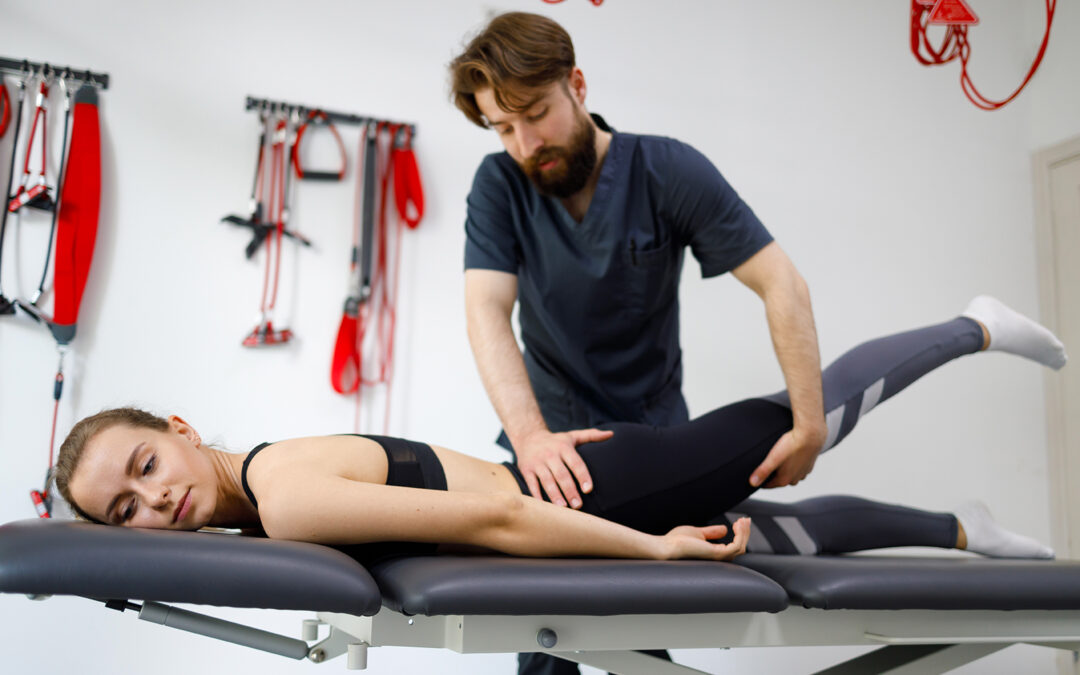Contents
Joint mobilization is a manual therapy technique. It is used by trained physical therapists, chiropractors and other health care professionals. It is intended to help address a variety of musculoskeletal conditions. Joint mobilization uses skilled and passive movements of a joint to help restore or improve its mobility. It can also help reduce pain levels and promote healing. This technique is used widely due to its effective nature in managing various conditions.
Benefits of joint mobilization
Joint mobilization boasts many benefits including:
- Improved joint mobility — Joint mobility can help restore or enhance the range of motion of joints. This range of motion may have become limited due to injury, surgery or a chronic condition. Improved range of motion can help you regain function and perform your daily activities more comfortably.
- Reduced pain — Joint mobilization can help alleviate your pain. This can be done by helping to reduce joint stiffness, muscle tension and nerve compression you may be experiencing.
- Enhanced function — This treatment can help to enhance your functional abilities, through both the improvement of your joint mobility and reduction of pain. This enhancement can make it easier for you to perform activities like walking, reaching, bending and lifting.
- Muscle relaxation — This technique can help tense muscles around a joint to relax. This relaxation can help with muscle spasms and tightness.
- Boosted circulation — The movement of joints during joint mobilization can help increase blood flow in the area. Oxygen and nutrients are vital for the healing process. Improved circulation can help ensure that they are delivered more efficiently to affected areas.
- Enhanced synovial fluid production — Joint mobilization can help stimulate the production of synovial fluid in the affected joint. This fluid helps to lubricate and nourish joint surfaces. Improved lubrication can help reduce friction in the joint and can improve joint health.
- Normalized tissue tension — Abnormal tension in the soft tissue around a joint can be the culprit behind or worsen pain. Joint mobilization can help normalize tissue tension. It can also help to return the normal balance in the affected joint area.
Risks of joint mobilization
Joint mobilization is considered a safe treatment. It is important that it is only performed by trained professionals. While it is a safe treatment, it does come with some potential risks. These risks can include:
- Pain and discomfort — It is possible for you to experience some temporary discomfort or soreness. This can occur during and immediately after treatment. However, this potential discomfort can be manageable and subside quickly.
- Bruising and swelling — Only trained health care professionals should use this technique. Excessive or forceful manipulation can lead to bruising or swelling in the affected area. It is crucial for the appropriate force and technique to be used to help minimize these risks.
- Aggravated symptoms — In rare cases, joint mobilization may cause your symptoms to worsen. This can happen if the treatment is not tailored to your specific condition or if the technique is performed improperly.
- Joint instability — It is essential for your condition to be fully assessed before treatment. This can help prevent overmobilization or aggressive techniques. If these occur, it can lead to instability of the joint.
- Contraindications — Certain medical conditions are not suited to joint mobilization. It is important that alternative treatments or modifications be made in these situations.
Conditions that may benefit from joint mobilization treatment
There are certain conditions that can benefit from joint mobilization as a treatment choice. Those conditions include:
- Osteoarthritis — Osteoarthritis is a degenerative joint disease. It can cause you to have stiffness and reduced mobility. Gentle joint mobilization techniques can be beneficial. They can help in the improvement of your joint functioning and can also help alleviate pain you are experiencing.
- Frozen shoulder — Frozen shoulder is a condition that causes pain and restricts your shoulder mobility. Joint mobilization can help break up adhesions (scar tissue) and improve the limited range of motion you are experiencing.
- Chronic neck or back pain — If you are plagued by chronic pain in your neck or back, you may benefit from joint mobilization. This treatment can help address joint dysfunction, reduce muscle tension and improve mobility.
- Carpal tunnel syndrome — If you suffer from carpal tunnel syndrome, joint mobilization may help reduce pressure on the median nerve that is causing you discomfort.
- Temporomandibular joint (TMJ) dysfunction — If TMJ dysfunction is affecting your life, joint mobilization may help improve your jaw mobility, reduce pain you’re experiencing and address joint imbalances.
- Post-surgical rehabilitation — If you are facing or have recently had surgery, joint mobilization can be a beneficial rehabilitation treatment. It can promote joint healing, reduce the formation of scar tissue and improve your function.
Lattimore Physical Therapy offers joint mobilization as a physical therapy treatment option
Joint mobilization is a valuable manual therapy technique. Lattimore PT is proud to offer this treatment by our licensed physical therapists. With the help of our skilled and experienced team, we can help your joint-related issues receive tailored treatment plans. We will use only the best techniques used that are suited to your condition. Our goal is to always provide you with the most effective care. We want to help you improve your joint function, reduce your pain and enhance your overall joint mobility. Together, we will work to help you regain your joint health and improve your quality of life.
Contact our team today for more information or to schedule an initial appointment.



